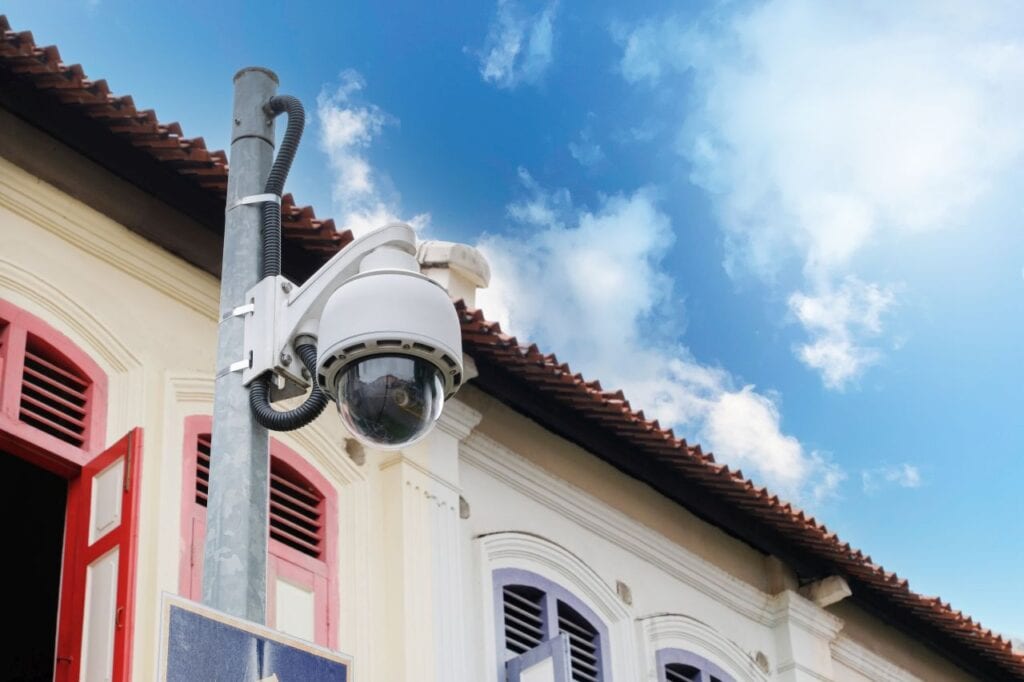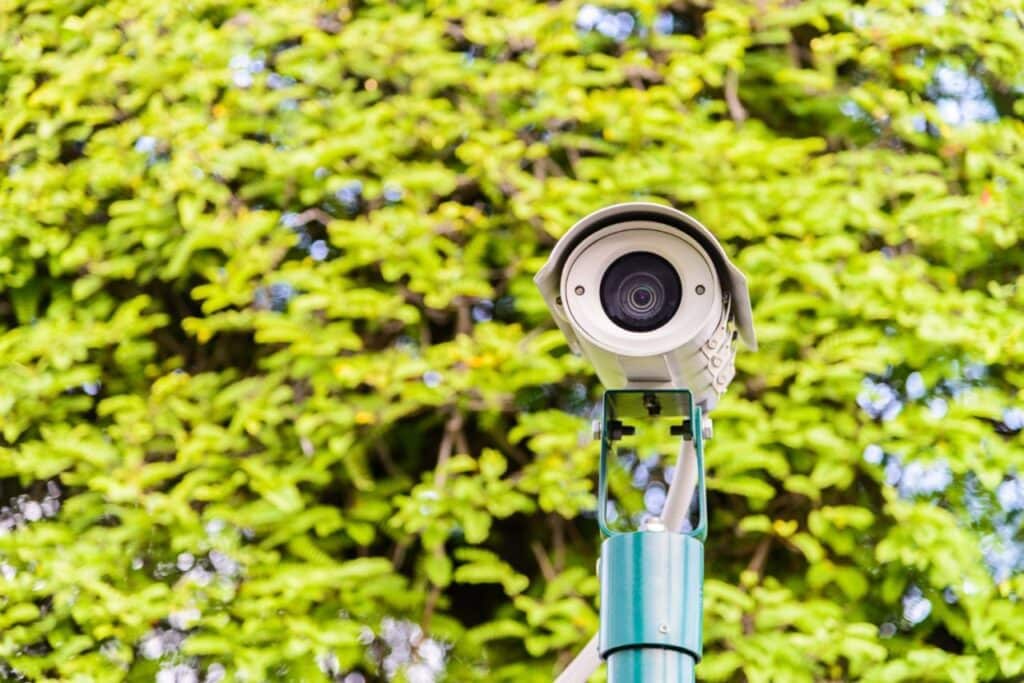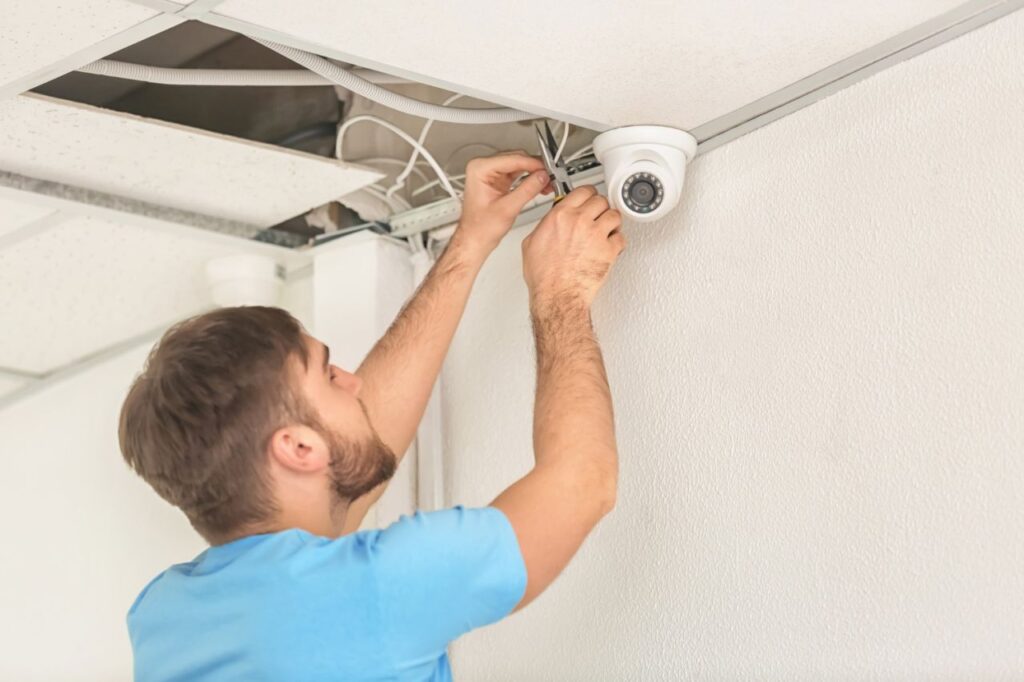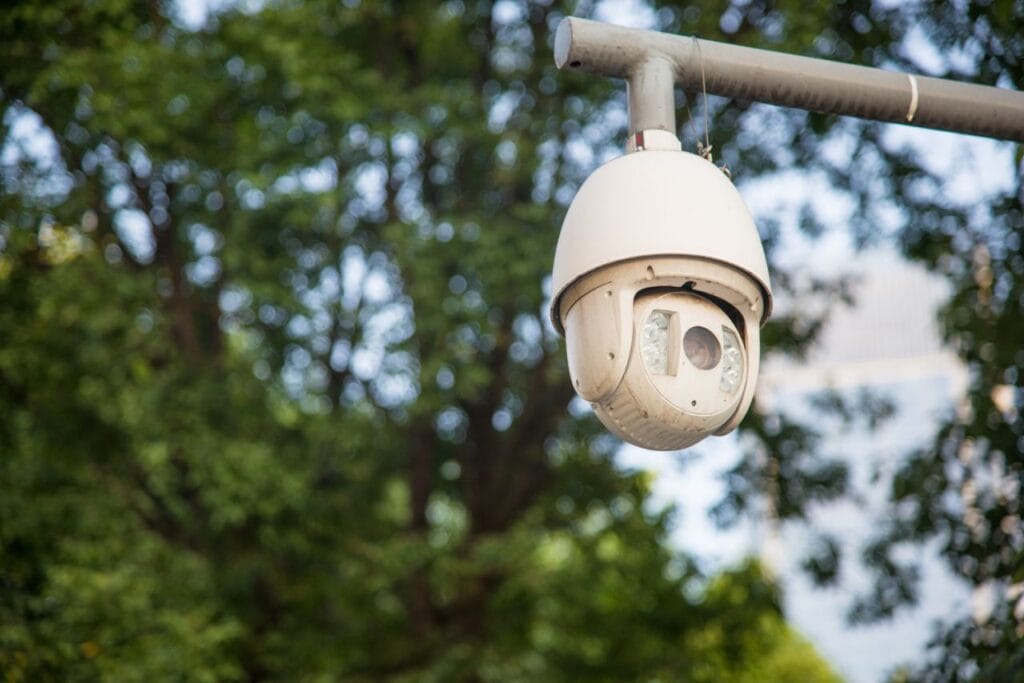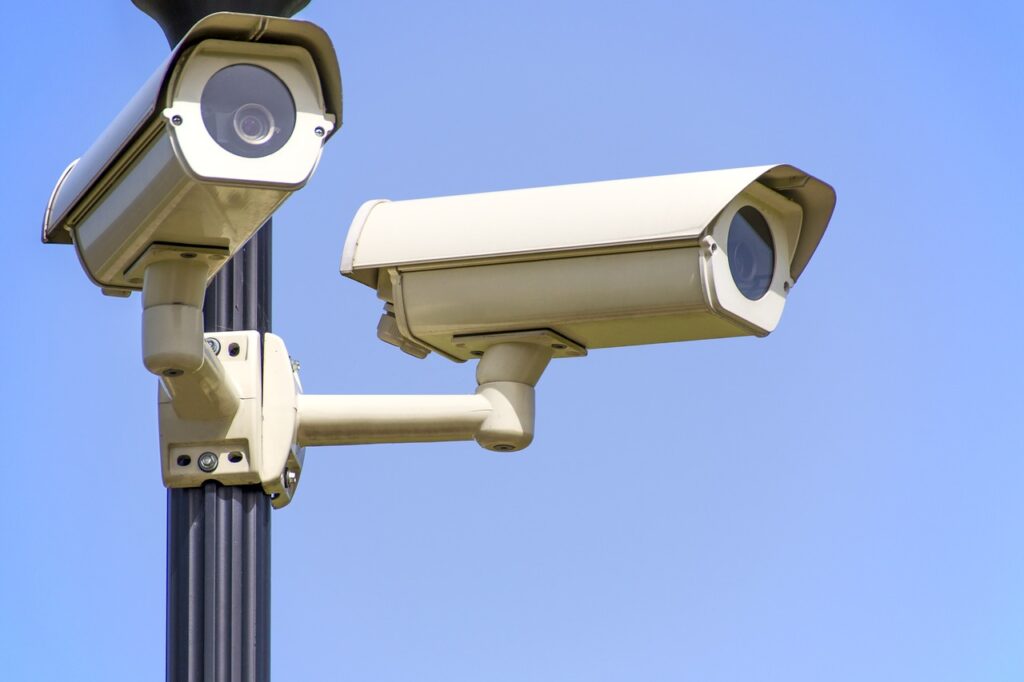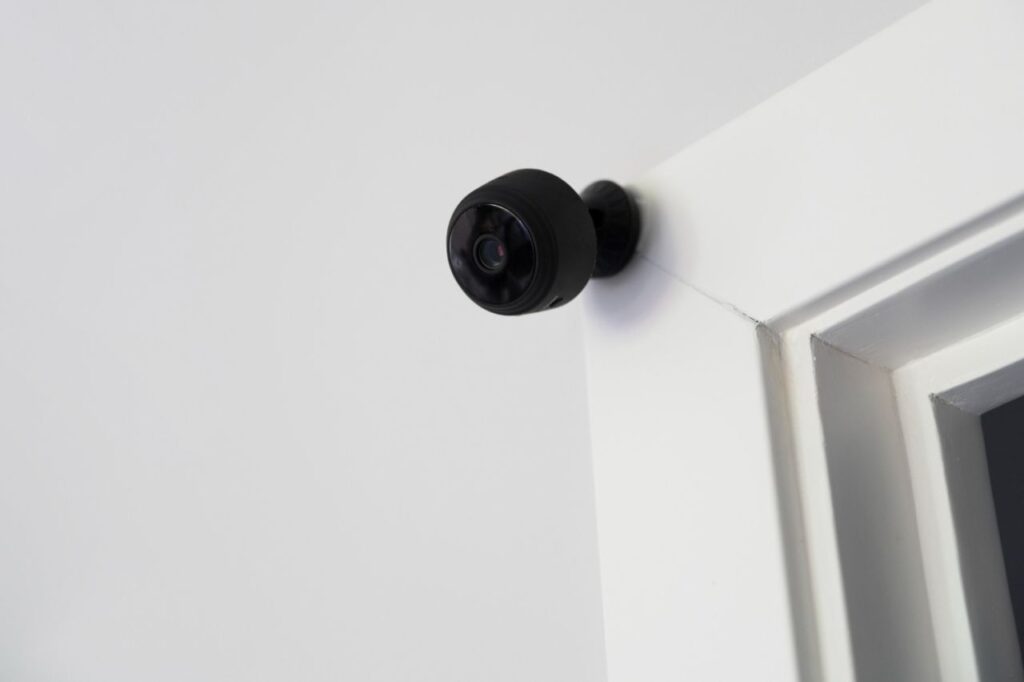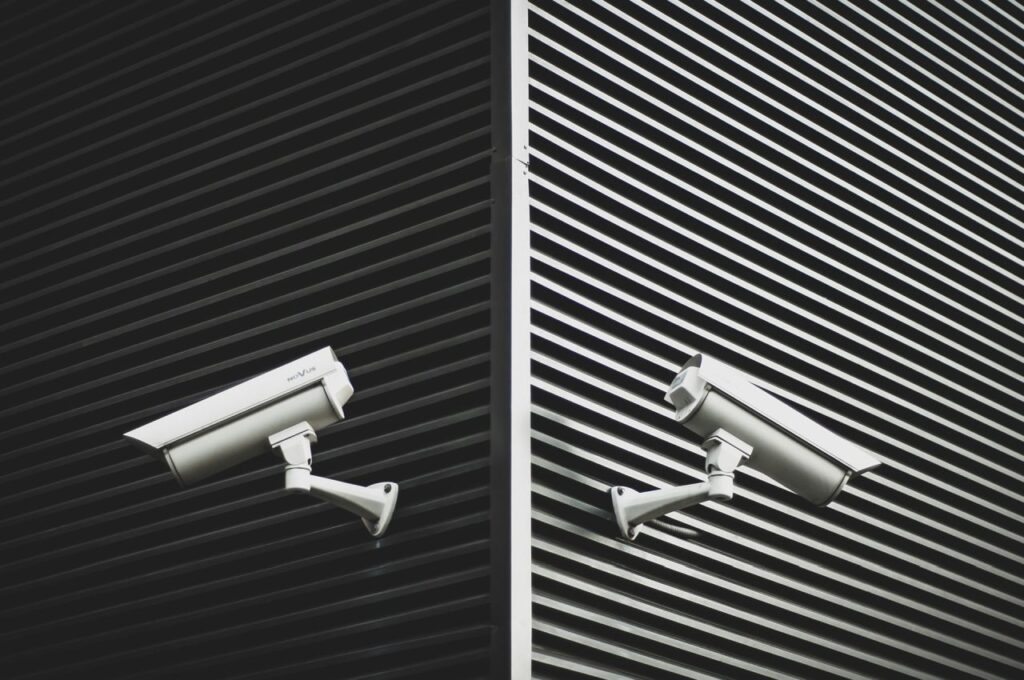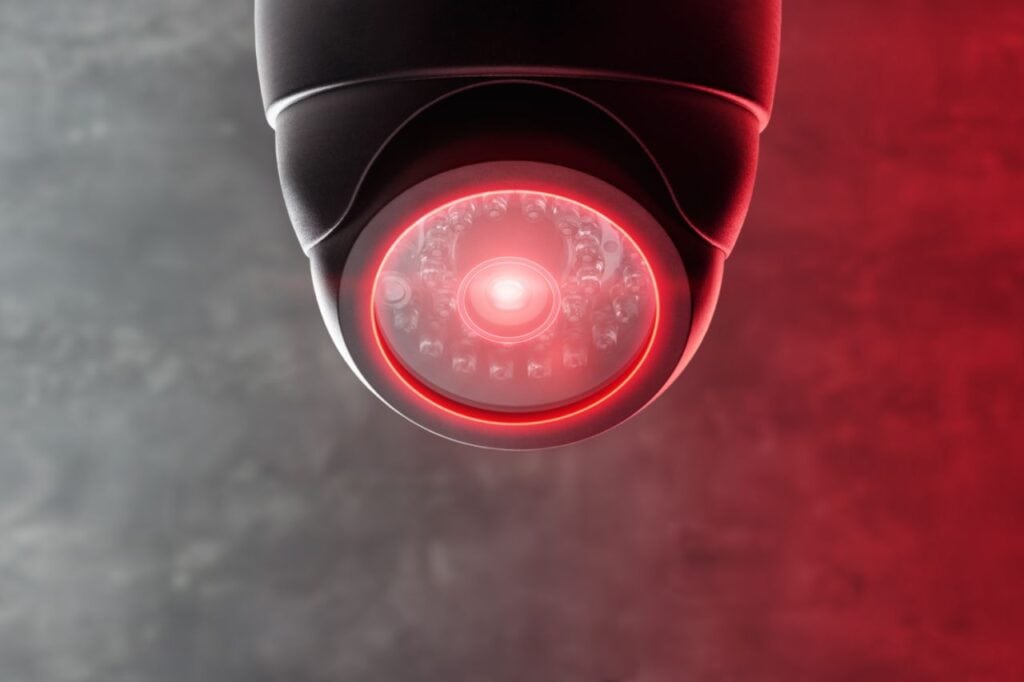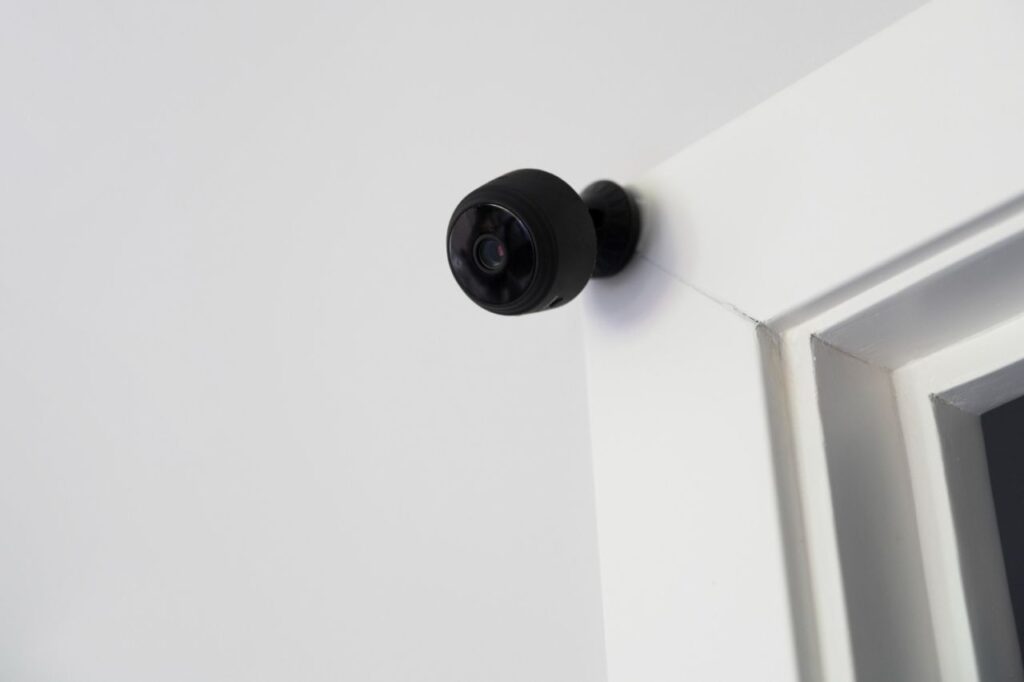Internet Protocol (IP) cameras are a subset of security cameras designed to send their footage over a network. You may watch live or archived video from any place in the globe as long as you have an internet connection.
IP cameras provide homeowners with a feeling of safety and peace of mind by allowing them to keep an eye on their property from afar. Captured video from IP cameras may be utilised as evidence in court in the case of a theft or accident.
If you're thinking about installing an IP camera, there are several things you should know beforehand. This article will explain what an IP camera is and will go over its most vital features.
What Is An IP Camera (Internet Protocol)?
Network or Internet Protocol cameras may provide digital video surveillance by sending and receiving data via a computer network or the internet. Commonly known as IP cameras, these cameras have several names (LAN). Internet Protocol (IP) cameras are so termed because they transmit data and receive power via an Ethernet (Ethernet) network connection.
They are a popular choice for commercial video surveillance since they can easily be integrated with DVRs and NVRs.
Internet Protocol Cameras Are Often Used In:
- Retail Stores
- Business Offices
- Government Buildings
- Industrial Sites
- Banks
- Military Facilities
- Traffic Intersections
Types Of IP Cameras
PTZ IP Camera
By remotely adjusting the camera's field of view and zoom level, pan-tilt-zoom (PTZ) cameras provide users a finer level of control while monitoring events. They are often used for keeping an eye on public outdoor places because of their wide field of view. Check this list of high-quality and affordable Melbourne CCTV to help you decide which product to choose for your home security.
Fixed IP Camera
IP cameras that can't be moved give just the view directly in front of the camera. In this mode, they keep a constant eye on subjects that are confined inside a certain boundary. Both inside and out, fixed cameras are ubiquitous in public spaces like supermarkets and private ones like boardrooms and executive offices. These cameras need less bandwidth to function properly than pan-tilt-zoom cameras.
POE OR POE+ IP Camera
Due to the PoE standard, IP cameras may draw both power and data from a single Ethernet connection (usually a Cat 5 or Cat 6). This eliminates the need for a second connection to carry data, and hence reduces the quantity of hardware required.
However, since there are fewer moving components in a PoE system, it is often easier to install and requires less upkeep than more conventional systems. What sets Power over Ethernet and Power over Ethernet Plus different is the amount of energy that is sent to run each set of equipment.
Common PoE systems can carry up to 15 watts of power, more than enough to power the overwhelming majority of IP cameras. In general, PoE+ systems are used in more potent cameras with their own cooling and heating systems. Transmission power for such setups may reach up to 30 watts.
Wireless IP Camera
Once a wireless IP camera is linked to a WiFi network, it may send and receive video data. The recorded data is then either sent to a remote server or kept in the camera's internal memory. Wired camera systems, on the other hand, are preferable for monitoring bigger areas since they are less vulnerable to disruption from interference. For the safety of smaller houses, wireless IP cameras are a practical solution.
Frequently Asked Questions About IP Camera
An Internet Protocol Camera, commonly referred to as an IP camera, is a digital video camera much like a webcam, which transmits and receives data over a network or the internet.
Unlike an ordinary webcam it is a standalone unit with its own IP address that requires nothing more than a network connection in order to transfer images. The IP camera connects to a network in exactly the same way as any other standard network device such as a laptop, tablet or printer.
IP cameras capture images in much the same way as a digital camera, and compress the files to transmit over the network. IP cameras may be used with a wired network connected via ethernet cable to a broadband modem or router, or wirelessly via a WiFi router.
Setting up an IP Camera is relatively simple, requiring nothing more than a network connection and a little patience to site and configure the camera. The majority of IP Cameras on the market can be configured to provide live viewing, continuous recording, operate at a scheduled time or be triggered by a specific event.
The images captured by an IP camera may be viewed from anywhere in the world via the internet, whether via pc, laptop or mobile phone. In many cases, as well as being able to view video footage and listen to audio streaming, the camera may also be controlled remotely.
IP Cameras are a versatile security solution, requiring nothing more than a network connection. There is no need for co axial cables, a computer station or even wired electricity. They can be used as a temporary or permanent solution, and relocated as and when required.
IP cameras are available for both indoor and outdoor use, with both day and night functionality, and with the ability to pan or zoom either remotely or via operator command. Whether you require overt or covert security, there is an IP camera to suit.
IP camera is a type of digital video camera used for surveillance which transmits data via a network Ethernet link. CCTV Camera is a type of digital video camera used for surveillance which transmits a signal for observation on monitor.
How Work Networked IP Cameras?
Transmission of video from an analogue or analog-over-digital security camera to a DVR requires the use of coaxial video wires (DVR). However, IP security cameras have the ability to transmit their footage via a wireless network to a distant place. To be more exact, IP cameras may connect to an NVR by wireless means (Wi-Fi), wired means (Ethernet cable), or even wired means (USB) of connection.
Depending on the IP camera type, the collected video may have a resolution of up to 16 megapixels. IP cameras can record in high definition. When recording video with an IP camera, the device's integrated processing chip compresses the data on the fly.
Exactly what does it suggest, if anything? To begin, the resolution of the camera has a direct relationship to the quantity of information that is recorded during a video clip. The storage space and bandwidth requirements for high-quality photographs are more than those for low-quality images.
When sending high-definition photos across a network, IP cameras need to compress the data, or make them smaller, to prevent using too much bandwidth.
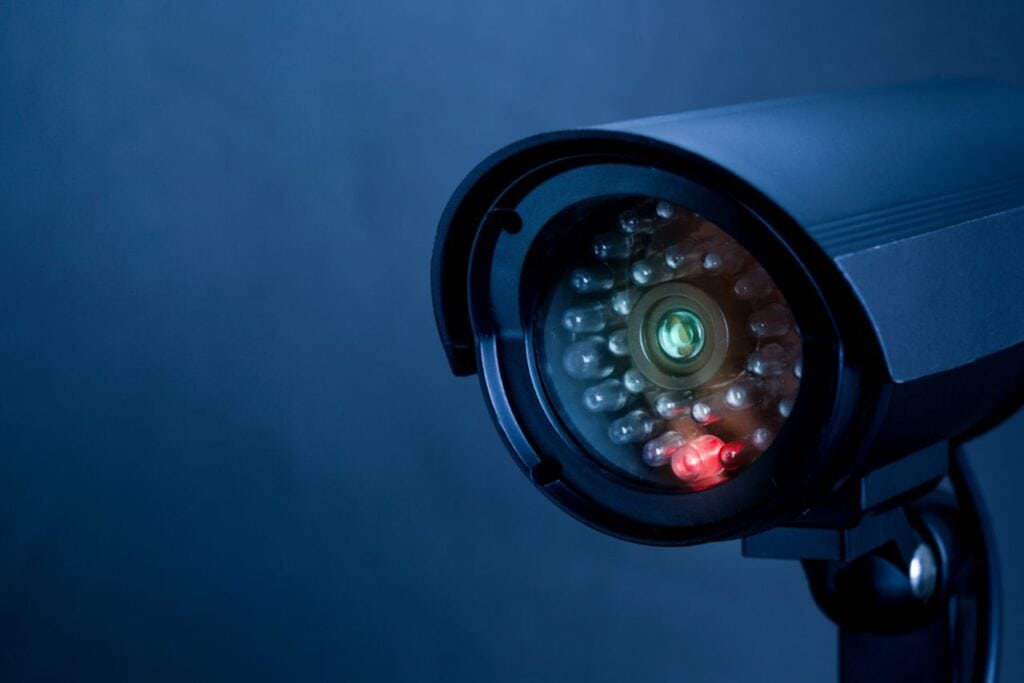
Compression standards like h.264 and MPEG-4 guarantee that the video's frame rate and quality are unaltered or very minimally altered by the time it arrives on your mobile device or PC.
IP cameras provide a variety of benefits over traditional CCTV cameras.
Two-Way Audio.
A built-in speaker allows the camera's owner to hear and talk to anybody or whatever is being captured. Only a subset of doorbell cameras has this functionality, however.
Remote Access.
Users with permission may watch live video on their desktops, laptops, tablets, and cellphones.
Better Resolution.
When compared to their analogue predecessors, IP cameras may provide a resolution up to four times greater.
There will be a decreased need for auxiliary wiring. Cameras may now operate without an external power source thanks to Power over Ethernet, a technique that sends electricity through an Ethernet connection.
When Setting Up An Ip Camera, You Have Three Network Options To Choose From.
A wireless network, or Wi-Fi network, is the system responsible for sending and receiving data with and from a wireless modem. IP cameras, like mobile devices, PCs, and even certain TVs and gaming consoles, may use Wi-Fi to connect to the internet for remote monitoring (Wi-Fi).
The video collected by an IP camera may be seen by entering the camera's IP address into a web browser. Remember that a fixed IP address is required. Dynamic IP addresses are assigned by certain ISPs and are liable to change on a periodic basis.
Your IP camera can only be accessed if you have a static IP address, which you may negotiate with your ISP.
In a wired network, an IP camera is connected to the network via Ethernet cable. Since there is little chance of signal interference or unwanted access happening in this setup, it is regarded as the most secure. Ethernet provides the fastest data transfer rates since it uses a connected connection rather than a wireless one.
A mobile network's convenience comes at the expense of being the slowest of the three available choices. Wi-Fi often provides superior transfer rates when compared to other networking technologies. Most IP cameras include a cellular transmitter already installed and ready to go out of the box, simplifying installation and network setup.
If you don't take the proper measures to safeguard your network, hackers may be able to get access to your ip cameras.
You or your security camera supplier should consider the following questions before implementing an IP security camera system:
- Is your IP camera system protected by unique login credentials?
- Is your WiFi network secure?
In 2014, a journalist stumbled into a website that catalogued the locations of 73,000 vulnerable IP cameras throughout the globe. This finding was disconcerting to say the least, but it did raise an important issue. Many surveillance cameras already have a username and password set up when you buy them. In spite of the fact that the default login should be changed, it seems that in at least 73,000 instances, the default login was not changed.
The service aggregated video from surveillance cameras installed in a broad variety of public places, including malls, parking lots, and warehouses. Far more disturbing was the camera video captured inside people's homes, including bedrooms and living rooms.
This incident has shown the unfortunate truth that unprotected IP cameras are trivially simple to compromise.
What's the good news, if any? IP camera security has never been easier. Truly, it is; you only need to verify a few details. To get started, check that the camera's default login information has been modified. If you are having trouble with your camera, check the instructions that came with it.
With the help of a skilled security specialist, you can make this decision if you deal with a business that specialises in installing security camera systems.
The next thing to do is to double-check that your Wi-Fi is safe and secure. Anyone with knowledge of the network's IP address might potentially see the video captured by the cameras if they are connected to a public Wi-Fi system. If the Wi-Fi network is set to private mode, only users who are actively connected to the network will be able to access the camera feed.
When the Internet and the surveillance systems are up and running, you may start using them without any more delays.
These days, wireless modems encrypt their data using a protocol called Wi-Fi Protected Access (WPA). Over time, the WPA's requirements have gotten more demanding. WPA3 is the latest and greatest security standard and is included into certain newer modems. WPA adds a layer of protection against hacking and other unwanted access to your security cameras.
IP security cameras, in comparison to analogue ones, have more useful capabilities and may be put in any structure, whether residential or commercial. IP cameras are a safe bet whether you need a single camera or a whole fleet.
IP Cameras Must Have Certain Features
Built-In Storage And The Cloud:
Consideration of storage capacity is essential while looking at IP cameras. Many companies are required by law to keep their surveillance film on hand for a certain amount of time, the length of which depends on the requirements of the company's industry and the laws of the company's locality.
Whether it's to the cloud, a solid-state storage (SSD), or a hard disc drive (HDD), most surveillance systems can back up their video feeds (HDD).
When compared to systems that depend only on one approach, "hybrid cloud" security methods are thought to be safer and more trustworthy. The most advanced systems back up video to the cloud and also save a copy on a local SSD or HDD.
POE Capabilities:
Power over Ethernet (PoE) IP cameras eliminate the need to run electrical lines, reducing the danger and expense of installation. When compared to wireless IP cameras, PoE IP cameras often have more reliable data transfer and are less prone to experience interference from surrounding devices.
Data Encryption For Videos:
A camera's degree of safety is dependent on its data encryption and network security. Data encryption ensures that only authorised parties may access the encoded information.
As IP cameras are a common target of Internet of Things (IoT) breaches, updating to current security standards is crucial to thwarting hackers' attempts to steal confidential data or make equipment useless. Both storing and transmitting the data is encrypted.
At Rest Encryption:
When we say that information is encrypted "at rest," we imply that it is safe while it is being temporarily kept on the camera. Examples of Public Key Infrastructure (PKI) encryption protocols include the RSA and AES algorithms. These guidelines make sure that no one with access to the video data may steal information from the on-board storage.
Transport Encryption "In transit" encryption safeguards information while it moves from one storage medium to another, whether that's from your computer to a cloud service or from your cloud service provider to your computer. Data in transit is encrypted using HTTPS/SSL on port 443, and only connections to trusted cloud services are allowed from secure computers.
IP Cameras' Additional Features:
Modern IP surveillance systems have the capacity to share video in real time. Today's IP surveillance systems have the advantage of allowing for instantaneous clip sharing by SMS, email, or live links. Notifying the proper authorities in a timely manner after an occurrence that calls for immediate action is made easier as a consequence of this.
Video Quality:
IP cameras, as is often known, provide much better video quality than the analogue cameras formerly used in CCTV systems. Due to the digital signals, they provide, they are able to collect more information. As a result, sophisticated video analytics like face matching may be included into the apps of a growing number of IP security systems.
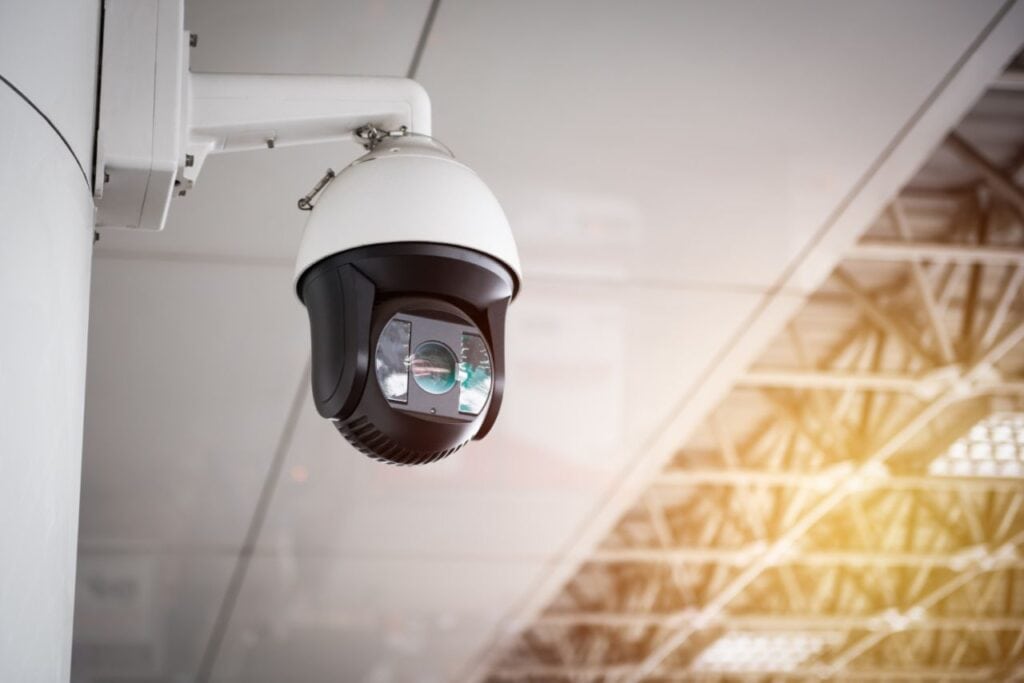
Edge-Based Video Analytics:
Modern surveillance systems rely heavily on artificial intelligence (AI) and analytics carried out at the camera's perimeter. With the help of these advancements, systems can now recognise people and things in the camera's perspective. By matching faces and licence plates, software with deep learning capabilities may alert users immediately of events and expedite investigations.
Users of these high-tech surveillance systems may set up limited zones inside the camera's vision and be alerted when significant activity is observed during certain periods of the day.
Stable State Streaming:
IP cameras that can maintain a continuous frame rate while recording need far less network traffic than other kinds, making them ideal for big enterprises. When cameras are in a steady state, they will broadcast an encrypted stream of thumbnails every 20 seconds, along with any relevant information.
An average IP camera operates at a rate of 20 kilobits per second, whereas a typical cloud camera feeds at a rate of 1-2 megabits per second. More than a hundred steady-state cameras may use the same network connection as a single traditional cloud camera, all while consuming far less bandwidth than the latter.
What To Look For When Buying An IP Camera:
- What is the extent of the surveillance? (Distance? Range?)
- If the camera requires internet, how much bandwidth will it require?
- How will the video be saved, and how much storage space will be required?
- Is there enough trust in data encryption to use it now? (RSA versus AES? At rest vs. in motion?)
- To what location is it being sent? (Inside? Outside?)
- Is it using encrypted transmission? (SSL/TLS?)
Conclusion
Internet Protocol (IP) cameras are a subset of security cameras designed to send their footage over a network. Captured video from IP cameras may be utilised as evidence in court in the case of a theft or accident. This article will explain what an IP camera is and will go over its most vital features. IP security cameras have the ability to transmit their footage via a wireless network. Wireless IP cameras connect to an NVR by wireless means (Wi-Fi), wired means (Ethernet cable) or even USB of connection.
The storage space and bandwidth requirements for high-quality photographs are more than those for low-quality images. IP cameras provide a variety of benefits over traditional CCTV cameras. Compression standards like h.264 and MPEG-4 guarantee that the video's frame rate and quality are unaltered or very minimally altered by the time it arrives on your mobile device or PC. Wi-Fi often provides superior transfer rates when compared to other networking technologies. Many surveillance cameras already have a username and password set up when you buy them.
In at least 73,000 instances, the default login was not changed for IP cameras. Double-check that your Wi-Fi is safe and secure before starting to use them. IP cameras have the capacity to back up video to the cloud, solid-state storage (SSD), or a hard disc drive (HDD) "Hybrid cloud" security methods are thought to be safer and more trustworthy than traditional approaches for securing video. IP cameras provide much better video quality than the analogue cameras formerly used in CCTV systems. By matching faces and licence plates, software with deep learning capabilities may alert users immediately of events and expedite investigations. Users of these high-tech surveillance systems may set up limited zones inside the camera's vision.
Content Summary
- Internet Protocol (IP) cameras are a subset of security cameras designed to send their footage over a network.
- You may watch live or archived video from any place in the globe as long as you have an internet connection.
- Captured video from IP cameras may be utilised as evidence in court in the case of a theft or accident.
- If you're thinking about installing an IP camera, there are several things you should know beforehand.
- This article will explain what an IP camera is and will go over its most vital features.
- What Is An IP Camera (Internet Protocol)?
- Network or Internet Protocol cameras may provide digital video surveillance by sending and receiving data via a computer network or the internet.
- These cameras need less bandwidth to function properly than pan-tilt-zoom cameras.
- However, since there are fewer moving components in a PoE system, it is often easier to install and requires less upkeep than more conventional systems.
- What sets Power over Ethernet and Power over Ethernet Plus different is the amount of energy that is sent to run each set of equipment.
- Common PoE systems can carry up to 15 watts of power, more than enough to power the overwhelming majority of IP cameras.
- Wireless IP Camera Once a wireless IP camera is linked to a WiFi network, it may send and receive video data.
- For the safety of smaller houses, wireless IP cameras are a practical solution.
- Transmission of video from an analogue or analog-over-digital security camera to a DVR requires the use of coaxial video wires (DVR).
- However, IP security cameras have the ability to transmit their footage via a wireless network to a distant place.
- IP cameras can record in high definition.
- When recording video with an IP camera, the device's integrated processing chip compresses the data on the fly.
- To begin, the resolution of the camera has a direct relationship to the quantity of information that is recorded during a video clip.
- IP cameras provide a variety of benefits over traditional CCTV cameras.
- Remote Access.
- When Setting Up An Ip Camera, You Have Three Network Options To Choose From.
- A wireless network, or Wi-Fi network, is the system responsible for sending and receiving data with and from a wireless modem.
- IP cameras, like mobile devices, PCs, and even certain TVs and gaming consoles, may use Wi-Fi to connect to the internet for remote monitoring (Wi-Fi).
- The video collected by an IP camera may be seen by entering the camera's IP address into a web browser.
- Your IP camera can only be accessed if you have a static IP address, which you may negotiate with your ISP.
- In a wired network, an IP camera is connected to the network via Ethernet cable.
- Is your IP camera system protected by unique login credentials?
- Is your WiFi network secure?
- Many surveillance cameras already have a username and password set up when you buy them.
- In spite of the fact that the default login should be changed, it seems that in at least 73,000 instances, the default login was not changed.
- IP camera security has never been easier.
- To get started, check that the camera's default login information has been modified.
- The next thing to do is to double-check that your Wi-Fi is safe and secure.
- Anyone with knowledge of the network's IP address might potentially see the video captured by the cameras if they are connected to a public Wi-Fi system.
- Built-In Storage And The Cloud: Consideration of storage capacity is essential while looking at IP cameras.
- Whether it's to the cloud, a solid-state storage (SSD), or a hard disc drive (HDD), most surveillance systems can back up their video feeds (HDD).
- Data Encryption For Videos: A camera's degree of safety is dependent on its data encryption and network security.
- IP Cameras' Additional Features: Modern IP surveillance systems have the capacity to share video in real time.
- Notifying the proper authorities in a timely manner after an occurrence that calls for immediate action is made easier as a consequence of this.
- Video Quality: IP cameras, as is often known, provide much better video quality than the analogue cameras formerly used in CCTV systems.
- As a result, sophisticated video analytics like face matching may be included into the apps of a growing number of IP security systems.
- Edge-Based Video Analytics: Modern surveillance systems rely heavily on artificial intelligence (AI) and analytics carried out at the camera's perimeter.
- Users of these high-tech surveillance systems may set up limited zones inside the camera's vision and be alerted when significant activity is observed during certain periods of the day.
- Stable State Streaming: IP cameras that can maintain a continuous frame rate while recording need far less network traffic than other kinds, making them ideal for big enterprises.
- When cameras are in a steady state, they will broadcast an encrypted stream of thumbnails every 20 seconds, along with any relevant information.
- More than a hundred steady-state cameras may use the same network connection as a single traditional cloud camera, all while consuming far less bandwidth than the latter.
- What To Look For When Buying An IP Camera: What is the extent of the surveillance?



